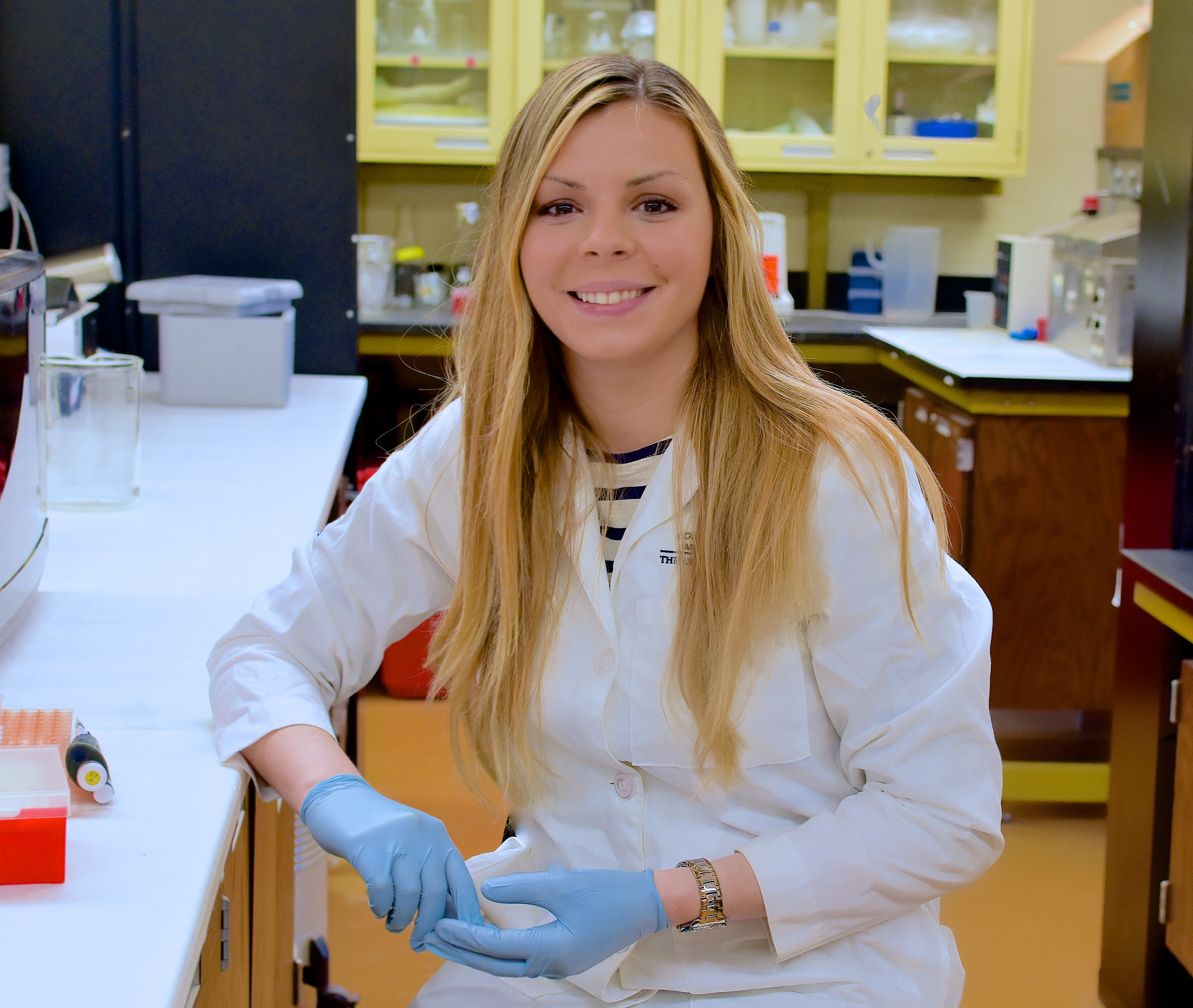EJC access a goldmine for University of Toledo lung cancer researcher
Each year, lung cancer kills more men and women worldwide than any other cancer. Twenty-nine percent of all cancer deaths — more than breast cancer, colon cancer and prostate cancer combined — are from lung cancer. That accounts for about 160,000 deaths in the U.S. alone each year.

Those are breathtaking numbers, but Rose Zolondek is doing something about it by attacking the disease at its roots.
Working in the Willey Lab within the University of Toledo’s College of Medicine and Life Sciences, Zolondek’s research is uncovering new ways to pinpoint who is at risk to be diagnosed with lung cancer. By identifying and screening high-risk people, doctors will be able to attack lung cancer in earlier stages, vastly increasing survival rates.
OhioLINK’s Electronic Journal Center (EJC) is a powerful player in Zolondek’s research.
“It would be tremendously difficult without OhioLINK,” Zolondek said. “We would have to have funding just to access some of these journal articles. OhioLINK is the reason many of us in the scientific community can access these articles.
“Without that, we would be missing important information that is really necessary to understand what the gaps are in our topic. Or if we don’t know what is currently being published, we might accidentally publish the same thing, and that’s something that’s looked down upon.”
Zolondek is pursuing her Ph.D. in biomedical sciences, focusing on cancer biology. Zolondek’s key role in the research lab is studying single nucleotide polymorphisms, or SNPs, which are changes in single nucleotides, or DNA building blocks.
Our DNA contains millions of SNPs, which can be important in altering the proteins that repair damaged DNA. If damaged DNA isn’t repaired properly, the result can be a population of cells with a DNA mutation that could lead to cancer.
Our risk of lung cancer varies depending on both our inherited genetics and on environmental exposures—smoking, radon, asbestos, and other toxins. Identifying which DNA sequences put us at risk for diseases such as lung cancer can lead to identifying and screening those at high risk for the disease.
Screening allows doctors to find and remove tumors at an earlier stage.
“Right now, CT scans are recommended for everyone at a specific age, every year, but it’s inefficient because not everybody is at risk for lung cancer,” Zolondek said. “If we know which patients are at highest risk by determining which SNPs they have, we can monitor those people every year. If they do have signs of early stage lung cancer, they can be treated sooner and they have a higher likelihood of survival.”
As part of her research, Zolondek accesses “a few hundred papers a year.” At least half of those papers, possibly more, come from journals with fees. On top of that, OhioLINK resources are often supplemented by individual institutions; the end result is a broad amount of STEM (Science, Technology, Engineering and Mathematics) resources for researchers.
Zolondek said an individual in a lab accesses about 200 papers a year. Each article costs about $30 or each individual could subscribe to a single journal for around $250 per year.
“I’m not aware of all the journals that charge because I use OhioLINK,” said Zolondek, whose career plans include either working for a pharmaceutical company developing clinical tests or as a medical writer. “But it could easily cost me over $1,000 a year just to read papers for my research.
“Even if I go through Google, the (University of Toledo) library system will log me in as a student. This happens for journals I would have never thought I’d need to pay for. Without realizing it, many students are actually using OhioLINK to access these resources whether they go to a library website or not. It’s a very integral part of my research.”
-
WHO: Rose Zolondek, Ph.D. candidate in the Willey Lab within the University of Toledo’s College of Medicine and Life Sciences. Zolondek is pursuing her Ph.D. in biomedical sciences, focusing on cancer biology.
-
WHAT: Zolondek’s research is uncovering new ways to pinpoint who is at-risk to be diagnosed with lung cancer.
-
OhioLINK’S ROLE: Zolondek is a heavy user of the Electronic Journal Center (EJC) for her research. She estimates an individual in one lab accesses about 200 articles per year for research. Each article can cost around $30, or an individual can buy a subscription to a single journal for about $250 per year. All told, she could pay over $1,000 just for articles in research. But OhioLINK’s EJC allows Zolondek to access all the articles she needs as a researcher for free.
###
Written by Ross Bishoff

